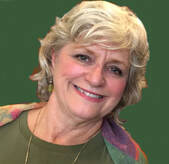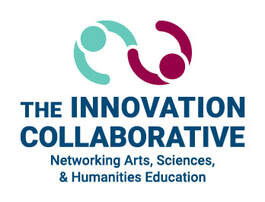 The Collaborative’s Research Thought Leaders help provide the strong foundation upon which the Collaborative’s work rests. Each Thought Leader is nationally and internationally recognized in their own field and brings an extensive depth of experience and expertise. They also are adept at working across disciplines. A Thought Leader is featured in each Collaborative newsletter. In this issue, we visit with Bonnie Cramond, Ph.D. Bonnie is Professor Emerita of Educational Psychology and Gifted and Creative Education at the University of Georgia (UGA) and the former Director of the Torrance Center for Creativity and Talent Development at UGA. She is known for her research in the assessment and development of creativity, especially among at-risk students, and for her extensive work in the creativity field. In a conversation with Collaborative Executive Director Lucinda Presley, Bonnie talked about her work and its relationship to the Collaborative, in addition to personal reflections on her mentor, Dr. Paul Torrance. Paul Torrance was an educational psychology professor at the University of Georgia and is called “the father of creativity.” He is known for developing the Torrance Test for Creative Thinking, which is the benchmark for assessing creativity. Tell us about your career in creativity, Dr. Torrance, and the Torrance Center. I got interested in creativity while teaching 5th grade students at Woodland West in Jefferson Parish, outside of New Orleans. I was inspired by how they “took off” when I did creative things with them. For example, they were inspired by the Guinness Book of World Records to create their own Woodland West Book of School Records. They created their own categories, such as who could say the alphabet backwards the fastest. They organized school competitions, wrote up the findings, and were able to get it published for the school. The school district took notice of this and then asked me to teach gifted students. Though there were no requirements for this back then, I took a summer course on gifted education at the University of New Orleans and, in the course of study, fell in love with the work of Dr. Paul Torrance. I then entered the University of Georgia graduate program and studied with Dr. Torrance When I finished my Ph.D., I taught gifted education in middle school in Lafayette, Louisiana. I also taught gifted education, creativity, and educational psychology at the University of Southeastern Louisiana and at Western Illinois University. When Dr. Torrance retired, I was encouraged to apply for his position since I had studied with him extensively and was accepted. He became a great mentor for me in my teaching and research for the rest of his life. He was known for his generosity. For example, he anonymously paid for assistantships for students in his department. No one knew about this until he retired. Since he had no heirs, when he died, he even left his house to the graduate student who rented an apartment from him on the premises and who, along with me, took care of him in his later years. He left what money he had to the university and all royalties from his books and tests to the Torrance Center at the university. During this time, the Torrance Center for Creativity and Talent Development was established at the University of George (UGA). I was named the fourth director of the Center. Although I also had a full load of classes to teach at UGA, I was able to help the Center thrive. The Center focuses on research, education, and service. For research, its goal is to facilitate and cooperate in creativity research, building on Dr. Torrance’s research. Thanks to Dr. Torrance, the University of Georgia rare book library has the largest collection of resources on creativity in the world. Scholars come from all over the world to conduct research. In focusing on education, the Center trains classroom teachers worldwide in creativity education. For service, it conducts Saturday and summer programs for kids. It also hosts the Duke University Talent Identification Program (TIP) each summer and on weekends for gifted middle and high school students. How does your work at the Torrance Center relate to your research? I became interested in how creative students are perceived and accepted. I was interested in how we find creativity in kids and how we nurture it. I hope that what I discovered can help teachers and students in their classrooms. I was influenced by Dr. Torrance’s observations that many of the creative kids he worked with were like wild ponies, and that we must harness their energy and direct it in a positive way. Part of my work was driven by my concern that kids were being labeled ADHD (attention deficit/hyperactivity disorder) when they were actually highly creative. I worried that the numbers of kids on Ritalin was way too high – as high as 30% in some schools - and that many more kids were on these drugs in certain geographic areas. In one of my early papers (see resources below), I showed how the descriptions of ADHD and creativity were the same. I got kids who were in a special program for highly creative kids and ADHD kids to do the Torrance Test for Creative Thinking. I found that about 20% of the highly creative kids scored high on ADHD behaviors and that a third of ADHD kids scored high on creativity. I concluded that there are kids with both ADHD and creativity and that there also are some kids who are highly creative but are misdiagnosed. My concern was that teachers aren’t taught what creativity looks like and I wanted to help educators see that a creative student can be the class clown, marching to a different drummer. I was initially attacked for my findings, but recent psychological findings are showing the similarities between ADHD and creativity (see resources below). What have you discovered in your research that points to the importance of the Collaborative’s work? I have been to more than 40 countries talking about creativity and one of the big issues I’ve found is that when you mention creativity, people only think of art. While art involves a great deal of creativity, you also can express creativity through any human endeavor. For, creativity is looking at something in a different way, solving a problem in a new way, or expressing something in an original and evocative manner. The sciences, technology, enginering, and math (STEM) especially need creative thinking, for that is where our biggest breakthroughs come in. They often don’t see the need for creativity. That is where the Collaborative comes in. It is showing that creativity has a big place in STEM and through STEAM. In talking with a chemistry professor at UGA, I learned that STEM has trouble keeping females and minorities in the STEM pipline toward careers because they think STEM is so dry. One of the solutions, I believe, is in showing the importance of creative thinking in STEM courses early on, not just focusing on the formulas and the rules. A good example comes from astronomer Carl Sagan. In his article “Wonder and Skepticism”, he pointed out that science involves wonder – complete openness to new ideas – and skepticism - distinguishing between the right and wrong ideas. And one shouldn’t overpower the other. Professor Jason Cantarella, professor of mathematics at UGA, likens this to music. He points out that if we taught music like they teach math in schools, we would only teach the music scales and not get to play the beautiful music. Too often in academia we focus too much on the skepticism and not on the wonder, too much on the scales and not on the music. It’s the creativity that helps bring in the wonder and the “music”, and the Collaborative is helping with that. Do you think the Collaborative is moving the creativity/innovation fields forward? The Collaborative is definitelty moving these fields forward. It is helping show the important role these skills play in education and in all fields. It’s also showing how effective collaboration works with teachers, lessons, and evaluation. I don’t see anyone else doing this to this extent on a national level. And the Collaborative’s work is having a national impact that can affect all grade and content levels. How do you see the Thought Leaders and the Collaborative benefitting from their work together? In recent years, more research has come out showing how innovation comes from the juxtaposition of two fields. When you have two people with two different fields working together, it’s exponentially beneficial. I am energized by seeing what other people are doing, such as the other Thought Leaders. Also, while we are helping bring important information to teachers, we are also learning from them and from the Collaborative members. Are there any other thoughts you would like to share? I feel so honored to be a Thought Leader. To get to work with all these people has been so exciting and beneficial. I’m so impressed with this work! Resources that address Dr. Cramond’s research: Bonnie Cramond. The Relationship between Attention-Deficit Hyperactivity Disorder and Creativity. https://eric.ed.gov/?id=ED371495 Bonnie Cramond. The Coincidence of Attention Deficit Hyperactivity Disorder and Creativity. Attention Deficit Disorder Research-Based Decision-Making. https://eric.ed.gov/?id=ED388016 The Creativity of ADHD https://www.scientificamerican.com/article/the-creativity-of-adhd/ Learn more about Dr. Torrance.
0 Comments
Your comment will be posted after it is approved.
Leave a Reply. |
